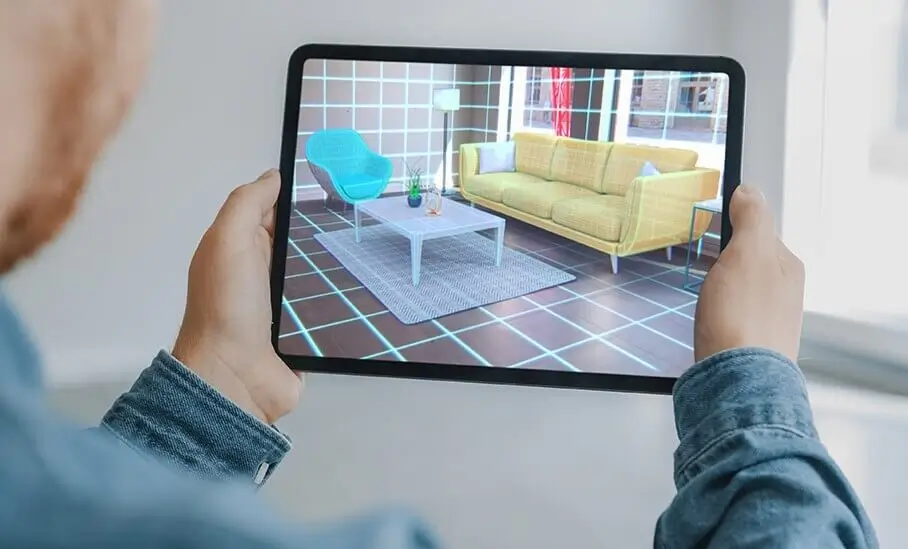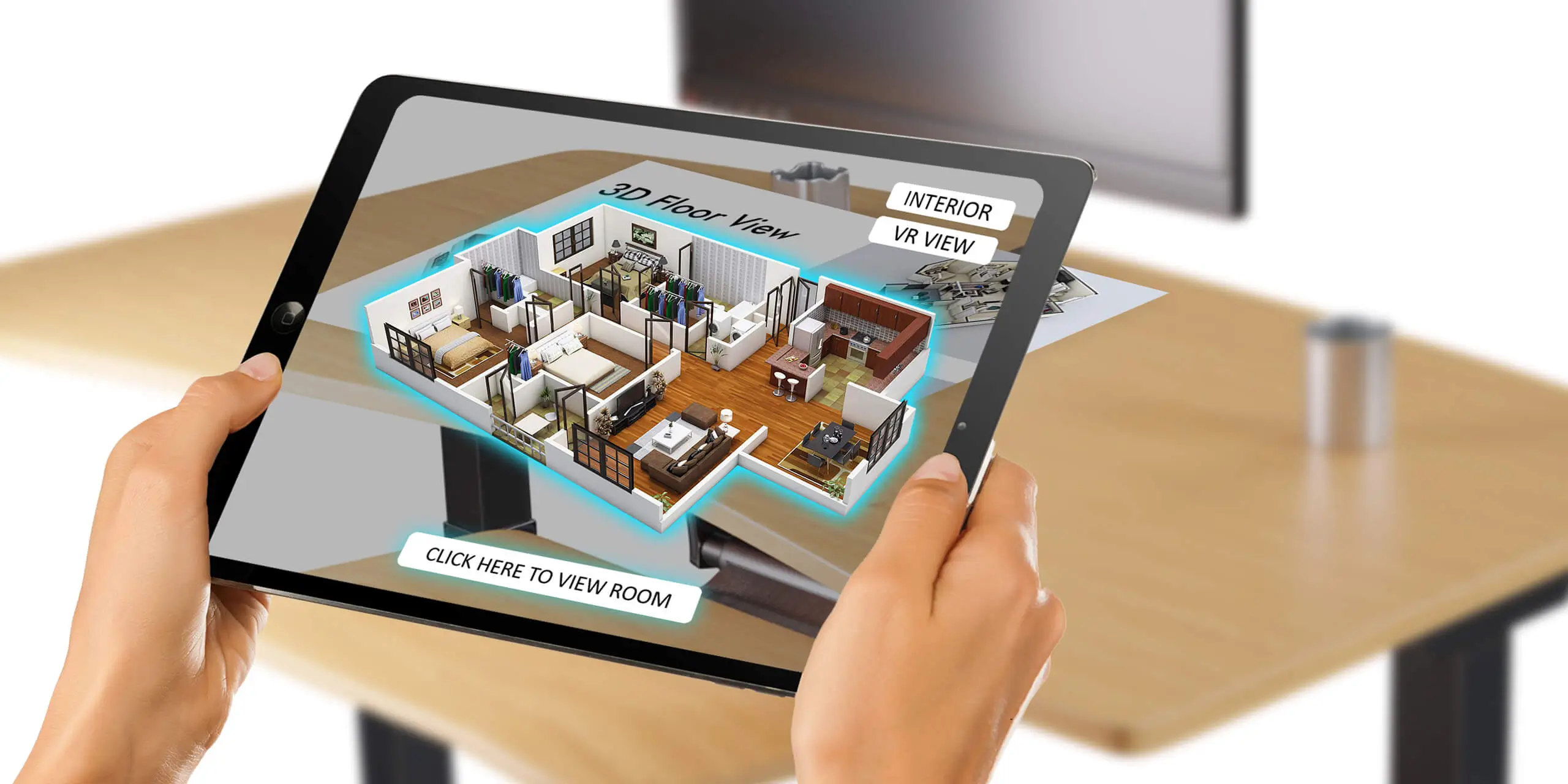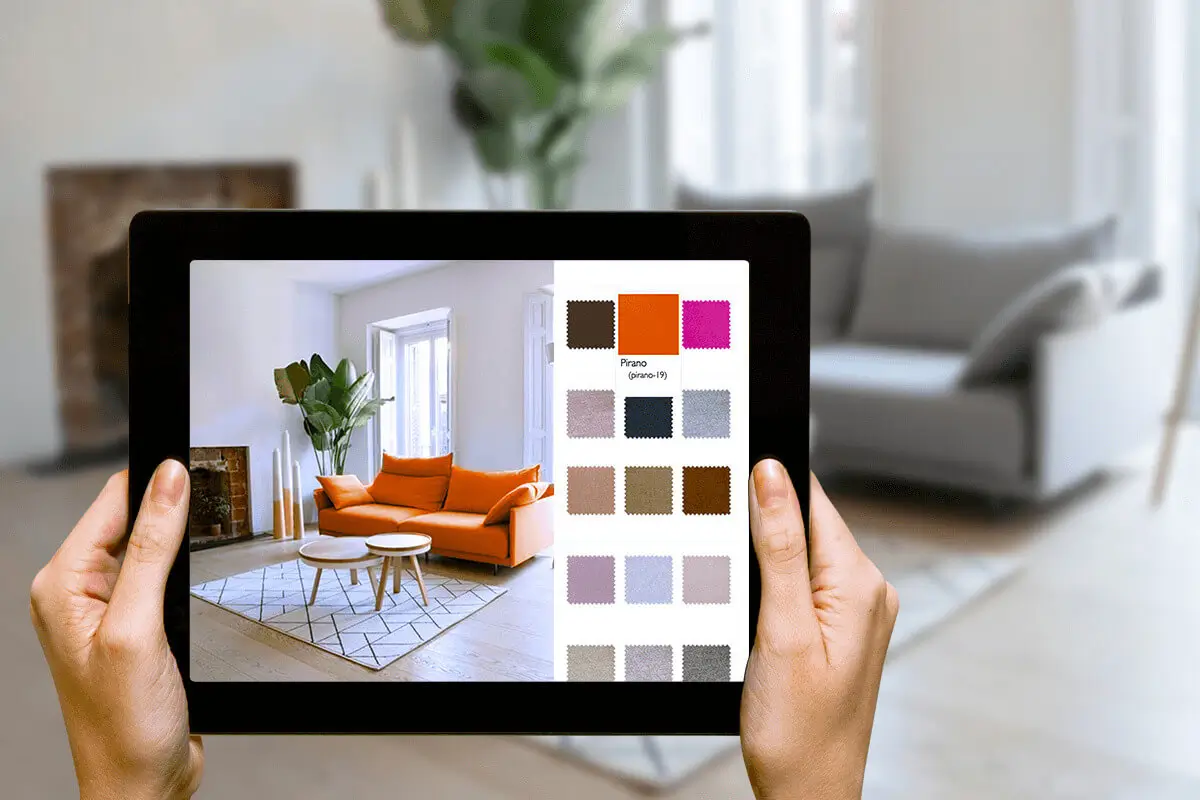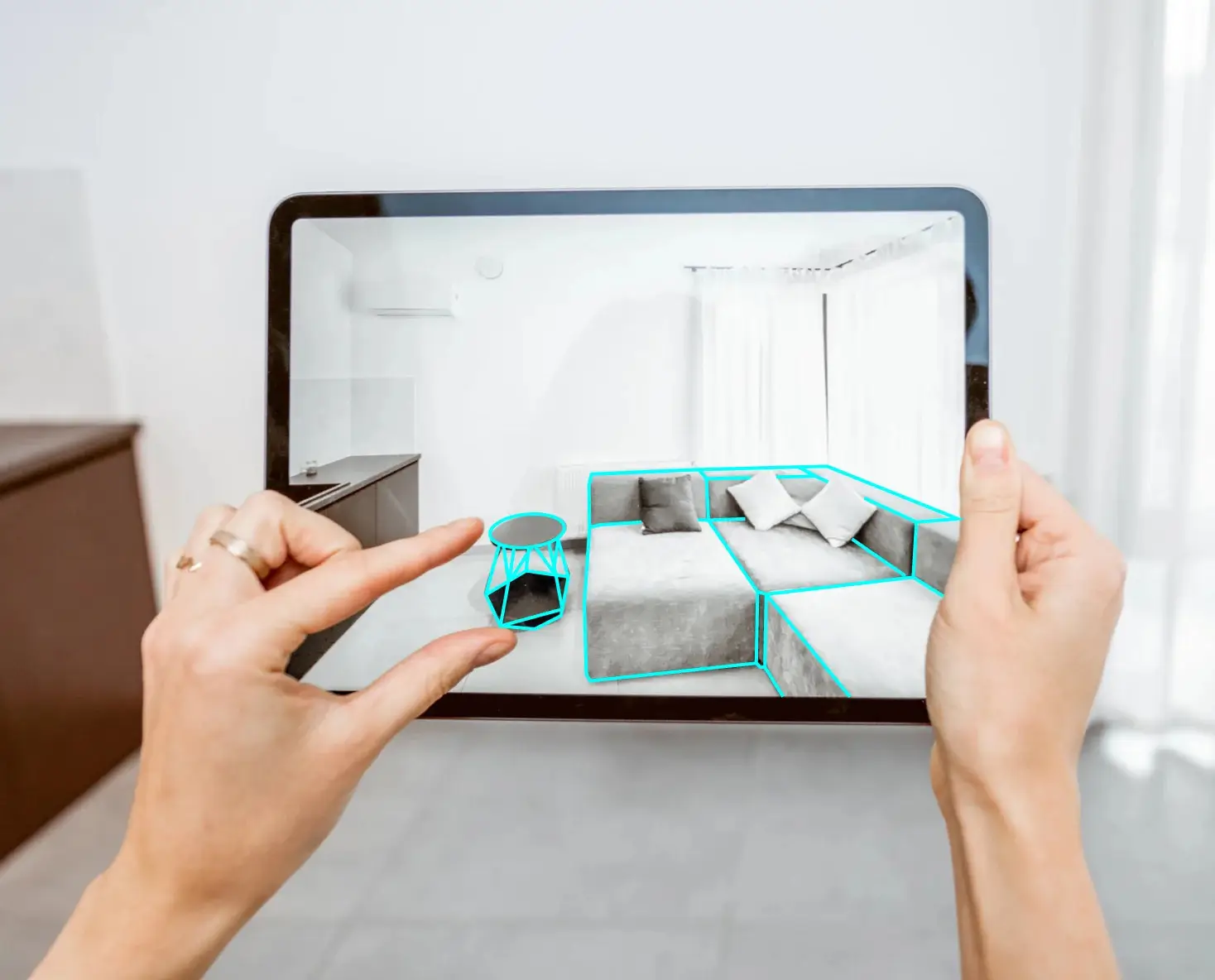- Tech Services

Concept Development
- Industry
- Emerging Tech
- Generative AI Hub
- Blog
- Contact Us

AR for Interior Design – Visualizing Home Renovations in 3D
In Lets Nurture
27
Nov. 2478
VIEWSImagine being able to see exactly how a new couch, an open-concept kitchen, or a different wall color would look in your home before making any changes. Augmented Reality (AR) is making this possible, transforming the way we approach interior design and home renovations.
Augmented Reality offers an immersive and interactive way to plan and execute design changes, bringing ideas to life with unprecedented clarity and precision. With AR, you can experiment with design choices and see how they fit within your existing space, reducing the guesswork and helping you make more informed decisions.
In this article, we’ll explore the various practical applications of Augmented Reality in interior design and how it is reshaping the industry with 3D visualizations – making home renovations more effective, collaborative, and visually stunning to create transformative spaces.
How Augmented Reality is Transforming Interior Design
- Enhanced Visualization and Decision-Making
One of the primary challenges in interior design is helping clients envision the final outcome. Traditional methods, such as mood boards and 2D sketches, often fall short in conveying the full picture. AR addresses this gap by overlaying digital models of furniture, fixtures, and decor elements onto the physical space. This immersive experience allows clients to walk through their prospective new environment, viewing potential changes from various angles and under different lighting conditions.
With AR, homeowners can experiment with different design options, such as paint colors, flooring materials, and furniture arrangements, all within the actual context of their home. This capability significantly reduces the guesswork and uncertainty that often accompany renovation projects, leading to more confident and informed decisions.
- Streamlined Communication and Collaboration
Effective communication between designers and clients is crucial for successful home renovations. Augmented Reality facilitates this by providing a common visual language that bridges the gap between professional jargon and client expectations. Clients can use AR applications on their smartphones or tablets to view proposed designs, make real-time adjustments, and share feedback instantly. This collaborative approach ensures that both parties are aligned throughout the design process, minimizing misunderstandings and revisions.
Augmented Reality also enhances collaboration among the design team, including architects, contractors, and suppliers. By previewing the proposed changes in 3D, all stakeholders can identify potential issues early on, as well as coordinate and streamline the execution of the project.
- Cost and Time Efficiency
Renovations are often costly and time-consuming endeavors. Implementing Augmented Reality helps mitigate these concerns by enabling precise planning and reducing the likelihood of costly mistakes. For instance, by visualizing the spatial layout and dimensions of new furniture, homeowners can avoid purchasing items that do not fit or complement their space. Similarly, Augmented Reality can help identify potential structural issues before construction begins, saving time and resources that would otherwise be spent on rework.
Similarly, AR-driven virtual staging can expedite the design approval process. Homeowners can quickly evaluate different design scenarios, select their preferred options, and finalize plans without the need for multiple physical prototypes or samples. This acceleration in decision-making translates to faster project completion and reduced labor costs.
Practical Applications of AR in Home Renovations
- Virtual Staging and Interior Design
Virtual staging is one of the most popular applications of Augmented Reality in interior design. Using Augmented Reality (AR) apps, designers can create lifelike 3D models of furniture and decor items and place them within the client’s home. This not only helps in visualizing the final look but also aids in optimizing the space for functionality and aesthetics. Through this, homeowners can experiment with different styles and layouts, ensuring that the final design aligns with their vision and lifestyle.
- Renovation Planning and Structural Changes
For more extensive renovations, such as knocking down walls or adding new rooms, Augmented Reality provides an invaluable tool for planning and visualization. By creating a digital twin of the home, designers and homeowners can explore various structural changes and their impact on the overall space. This foresight helps in making informed decisions about the feasibility and desirability of major renovations.
For example, if a homeowner is considering expanding their kitchen, applying Augmented Reality (AR) can show how the new layout would integrate with the existing structure, including potential changes to plumbing, electrical systems, and natural lighting. This detailed visualization ensures that all aspects of the renovation are considered, leading to a more seamless execution.
- Personalized Design Solutions
Augmented Reality technology allows for a high degree of customization, catering to the unique tastes and preferences of each homeowner. By using AR apps, clients can upload images of their space and experiment with different design elements, from paint colors and wallpaper patterns to custom cabinetry and lighting fixtures. This level of personalization enabled by Augmented Reality ensures that the final design is not only aesthetically pleasing but also tailored to the specific needs and desires of the homeowner.
- Virtual Showrooms and Product Visualization
Augmented Reality enables designers and homeowners to visit virtual showrooms from the comfort of their homes. These virtual showrooms offer an immersive shopping experience where users can explore a wide range of furniture, fixtures, and decor items in a 3D environment. This capability allows clients to visualize how different products would look in their space without the need to physically visit multiple stores, saving time and effort.
Additionally, Augmented Reality is also used to envision custom-made products. For instance, a designer can create a virtual model of a bespoke piece of furniture and place it within the client’s home to get their approval before manufacturing. This significantly reduces the risk of dissatisfaction with custom orders and ensures that the final product meets the client’s expectations.
- Real-Time Measurements and Space Planning
Accurate measurements are crucial for any renovation project. Augmented Reality applications can instantly measure room dimensions and create scaled floor plans. By using a smartphone or tablet camera, homeowners can scan their rooms, and the AR app will generate precise measurements and layout plans. This additionally eliminates the need for manual measuring and helps in planning furniture placement and space utilization more effectively.
Implementing AR can also assist in identifying potential issues with spatial arrangements. It can highlight areas where furniture might obstruct walkways or where there might be insufficient clearance for opening doors and drawers. With this proactive approach, AR helps in optimizing the design for both aesthetics and functionality.
- Color and Material Matching
Choosing the right colors and materials is a critical aspect of interior design. AR technology can simplify this process by allowing users to visualize different color schemes and material finishes in their actual space. Homeowners can use AR apps to see how various paint colors, wallpapers, flooring options, and upholstery fabrics will look in their home under different lighting conditions.
This real-time visualization helps in making informed choices and ensures that the selected colors and materials complement each other harmoniously. It also reduces the risk of costly mistakes, such as ordering large quantities of materials that do not work well together once installed.
- Integration with Smart Home Technologies
Augmented Reality can seamlessly integrate with smart home technologies, providing a holistic approach to modern interior design. Homeowners can use AR to visualize the placement and functionality of smart devices, such as lighting systems, thermostats, and security cameras, within their redesigned space. This integration ensures that the smart home features are incorporated into the design in a way that enhances both convenience and aesthetics.
For instance, AR can show how smart lighting would affect the ambiance of a room at different times of the day, helping homeowners select the right fixtures and control systems. It can also demonstrate how automated window treatments would operate, ensuring that they blend seamlessly with the overall design.
- Virtual Walkthroughs for Real Estate
In the Real Estate industry, Augmented Reality applications are transforming the approach of providing virtual walkthroughs of properties with 3D. For interior designers working with real estate agents, this application offers a unique opportunity to showcase potential renovations to prospective buyers. Clients can now explore different renovation scenarios, such as kitchen remodels or bathroom upgrades, through an AR-enabled walkthrough, helping them envision the property’s potential and make informed purchasing decisions.
Conclusion
Augmented Reality is revolutionizing interior design and home renovations, offering unparalleled opportunities for visualization, collaboration, and efficiency. By bridging the gap between imagination and reality, AR empowers homeowners and designers to create beautiful, functional, and personalized living spaces.
As the technology continues to advance, its impact on the industry is set to grow, steering in a new era of innovation and creativity in home design. Augmented Reality is more than a trend; it serves as a strategic move that can transform and elevate renovation processes, making interior design applications more efficient, valuable and aligned.
Curious about how Augmented Reality can transform your next project?
At LetsNurture, we specialize in integrating cutting-edge AR technology into interior design projects, turning your vision into reality with precision and creativity. Whether you’re looking to renovate your home or reimagine a commercial space, our team of experts is here to guide you through every step of the process.
Contact us today to explore innovative solutions tailored to your needs and start bringing your design dreams to life. Let’s nurture your space with the future of design.
| Frequently Asked Questions |
|---|
1. What is Augmented Reality (AR) in interior design?
|
2. How does AR improve the interior design process?
3. Can AR help with space planning and furniture arrangement?
|
4. How does AR assist in choosing colors and materials?
5. What are the benefits of virtual staging with AR?
|
6. How does AR facilitate renovation planning and structural changes?
|
7. Can AR help identify potential issues during the design process
|
8. How does AR integrate with smart home technologies?
|
9. Are there AR applications for visiting virtual showrooms?
|
10. How does AR benefit real estate and virtual walkthroughs?
|








